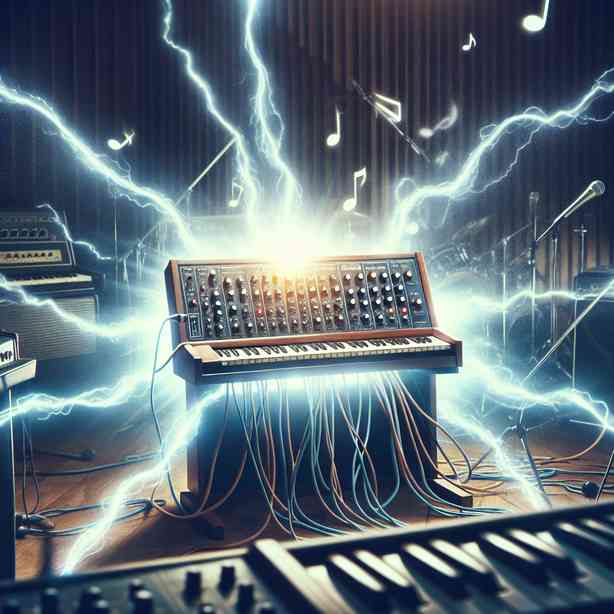
In recent years, the rise of synthetic technologies has transformed various industries, capturing the imaginations of engineers, entrepreneurs, and consumers alike. Among these innovations, synthesizers and artificial intelligence systems have gained significant attention, fundamentally changing how we create, experience, and understand music and art. This evolution reflects a profound cultural shift that raises questions about creativity, machine intelligence, and the future of artistic expression.
The moment the synth took over can be traced back to its introduction in the mid-20th century. Early synthesizers, such as the Moog Modular, revolutionized the music industry by allowing musicians to create entirely new sounds that were previously unimaginable. This marked a departure from traditional acoustic instruments, enabling composers to explore uncharted sonic territories. As the synth gained popularity, various music genres, particularly electronic, pop, and hip-hop, began to incorporate its capabilities, leading to the birth of new styles and cultural movements.
As synthesizers evolved through the years, so did the technology behind them. The introduction of digital synthesizers and software-based instruments further expanded the creative possibilities, allowing artists to manipulate sounds with unparalleled precision and ease. Meanwhile, the rise of powerful computers and software such as Ableton Live, Logic Pro, and FL Studio democratized music production, enabling a new generation of musicians to create high-quality recordings from their own homes. This accessibility enabled individual artists to express their creativity without the need for expensive studio time, fundamentally altering the music landscape and leading to a flourishing of independent musicians and diverse genres.
The influence of synthesizers also extended beyond music, impacting visual arts, film, and even literature. Artists began to use synthesizers to create immersive auditory experiences that complemented their visual works. In contemporary cinema, sound design has become an integral aspect of filmmaking, with synthesizers playing a key role in crafting atmospheric scores that enhance storytelling. Likewise, in literature, sound poetry and experimental narratives have emerged, utilizing the principles of synthesis to engage readers in innovative ways.
However, as much as synthesizers have been celebrated for their innovative capabilities, they have also raised important questions about the role of technology in creativity. As AI becomes increasingly sophisticated, there’s a growing concern about whether machines can truly replicate human creativity or if they can merely emulate it. Some argue that while machines can produce impressive works, they lack the emotional depth and experience that inform human artistry. Others, however, embrace the potential for collaboration between human creators and machines, envisioning a future where artists employ AI to augment their creative process rather than replace it.
This evolution invites us to reconsider our understanding of authorship and originality in the creative realm. For instance, when an AI generates a piece of music or art, who is the true creator—the machine, the programmer who designed it, or the person who sought its output? This question extends to legal and ethical territories, as the world increasingly grapples with copyright issues surrounding AI-generated content. As we navigate this uncharted territory, it’s essential to foster discussions about intellectual property rights and the implications of synthetic creativity on traditional artistic practices.
Despite these complexities, the symbiotic relationship between synthesizers and artists continues to flourish. Many contemporary musicians find inspiration in the blending of analog and digital techniques, utilizing synthesizers to explore diverse musical landscapes. This fusion leads to innovative soundscapes that capture the essence of our rapidly changing world, often reflecting broader societal themes. Artists are increasingly using their platforms to address pressing issues, from climate change to social justice, weaving their messages into the very fabric of their work, facilitated by the tools at their disposal.
As we look to the future, it is clear that synthesizers will continue to play a pivotal role in shaping artistic expression. The trends of personalization and customizability are becoming paramount in the design of new synthesizers and software. This development allows for an unprecedented level of individuality in music production, encouraging artists to craft unique sounds that resonate with their personal experiences and identities.
Furthermore, the integration of AI in music production is likely to evolve, generating even more intricate collaborations between technology and human artistry. As predictive algorithms become more refined, they will enable producers to generate suggestions, melodies, and harmonies tailored to specific moods and styles, streamlining the creative process while still allowing for individual artistic expression.
Ultimately, the moment the synth took over represents a broader cultural movement that acknowledges both the power of technology and the intrinsic value of human creativity. As we confront the challenges posed by AI and synthetic creativity, it is vital to maintain a dialogue that respects the nuances of artistic expression. We owe it to ourselves as a society to explore how we can harness these innovations while preserving the elements of creativity that make art so profoundly human.
In conclusion, the transformative impact of synthesizers on music and art is undeniable. From their revolutionary inception to their current status as indispensable tools for innovation, synthesizers have redefined what it means to be a creator. The questions surrounding AI’s role in creativity will continue to provoke debate, yet they also offer an opportunity to deepen our understanding of artistry in the digital age. Embracing the symbiosis of technology and artistry may lead us to new heights of creative exploration, highlighting the boundless possibilities that lie ahead. As we move forward, it is clear that the soundscape of our future will be richer, more diverse, and undeniably influenced by the resonant chords of synthetic creativity.


